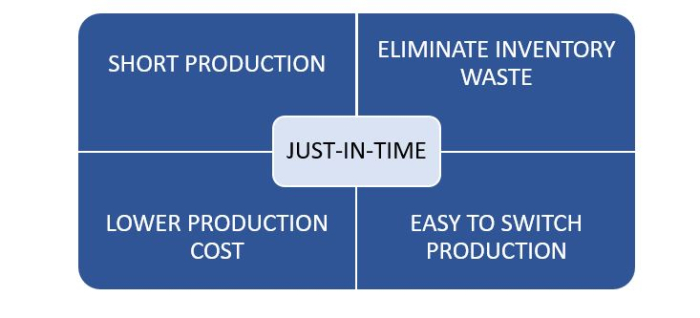
 Data Structure
Data Structure Networking
Networking RDBMS
RDBMS Operating System
Operating System Java
Java MS Excel
MS Excel iOS
iOS HTML
HTML CSS
CSS Android
Android Python
Python C Programming
C Programming C++
C++ C#
C# MongoDB
MongoDB MySQL
MySQL Javascript
Javascript PHP
PHP
- Selected Reading
- UPSC IAS Exams Notes
- Developer's Best Practices
- Questions and Answers
- Effective Resume Writing
- HR Interview Questions
- Computer Glossary
- Who is Who
Operations Concepts Taught in an MBA
An MBA in operations management is a postgraduate program, which is in demand these days. An MBA degree in operations management will teach you the core concepts of planning, scheduling, controlling, and managing the overall production process of the business.
In a manufacturing firm, an operations manager has to be an all-rounder to manage the activities of day-to-day production. Operations management will teach you to maintain the daily activities of the business for the scheduled and error-free delivery of products. Operations management talks about how raw materials and labor can be transformed into finished goods and services that can be further used by its customers. The main focus of the operations management course is to learn about the optimum utilization of available resources, manage inventory, and have a hassle-free production process.
Operations management's main objective is to maintain the optimum working capital and increase efficiency. Managing inventory, labor, and all the finances of the production is a difficult task, but the concepts of operations management give the operations manager a blueprint to deal with the daily or short-term operations of the organization.

You need to be very clear about the concepts of operations management to carry out these tricky tasks of the organization because a little mismanagement can lead to a huge loss for the production department or the finances of the organization as well.
An MBA in operations management will make you understand the internal processes of the business and teach you the basic concepts of handling and managing inventories, holding costs of inventory, just-in-time delivery, quality management, and economic order quantity. These concepts will teach you how to efficiently use your resources to obtain maximum operating profits.
What You Will Learn from an MBA in Operations Management?
Just-in-Time Inventory Management
Just-in-time inventory teaches us to receive inventory only as needed. In JIT, we don't overstock the inventory, as it increases the holding cost of inventory. The main focus here is to get the inventory from the suppliers just before starting the production process. It reduces the risk of stuck capital in excessive inventory, and maintaining and managing that excessive inventory is a troublesome task. An organization should only produce according to the demand of the market. Excessive production can lead to increased costs and decreased profits.
Just-in-time inventory management teaches how to manage the optimum inventory to increase inventory turnover and reduce the holding cost of inventory. Just-in-time inventory helps us take calculative inventory measures and helps reduce inventory waste. So, it is an important concept that is being taught in operations management.

Total Quality Management
Total quality management talks about how to satisfy the customer by providing them with the best quality product at affordable prices. People are becoming more aware of their wants these days, so when they are paying for something, they examine the product, Is the product worthy enough to satisfy their wants? It is challenging for the operations management team to come up with ideas and strategies to maintain their goodwill in the market. Operations managers do research and take care of their customer's demands, and they have to work on producing the exact quality products that their organization is claiming. Quality management builds trust with their customers and helps them create a strong, loyal customer base for a longer period of time. If the quality of your product drops, then ten more brands in the market are providing better products and services, and those companies will target your customers in no time. So, maintaining the quality of the product is important for increasing profit and staying in the market for a long time. In this technology-driven era, customers are aware of the quality you are providing because of the system's transparency.
So, total quality management will teach you how to hold onto your customer for a longer period and how to satisfy your customers who are buying your products, targeting your potential market knowing their needs, and updating the quality of your products and services according to the changing need of your customers.
Six Sigma Methodology
Six Sigma is a statistical approach to reducing errors and defects in the system. It focuses on eliminating unnecessary steps from the production system and reducing manufacturing costs. It is an expensive and long-term process to implement, and it takes time to show results. Six-sigma has an accuracy of 99.999%, with less than 7 products showing defects in a million. Six-sigma uses an engineering approach to bring accuracy to operations management by eliminating unnecessary steps in the process and reducing the overall cost of the process. It is a time-consuming and costly process, but it pays for itself after a while.

In operations management, you will learn the methodology of six sigma, where you learn how to implement the methods of six sigma in different departments of the organization and eliminate defects and errors, increasing the profits of the organization.
Assemble-to-order Strategy
Assemble-to-order strategy is used in the production process of a product where the basic parts of the products and assemble when the order is received and such products can be customized to a certain level as well. In the era of customizable products, manufacturing firms have taken one step closer to designing and making products according to the needs of their clients. Manufacturing units have their parts ready and assemble them into finished goods as soon as they receive their order. It takes some time for the firm to deliver a customizable product, but it brings more customer satisfaction.
In operations management, it's been taught how and what kind of manufacturing firms' "assemble to order" strategy is being used. Operation managers need to understand the market and customers they are serving to create a loyal customer base by satisfying their customers.
Bottleneck Analysis
A bottleneck is a condition of clogging in the production process. Bottlenecking increases the opportunity cost and puts the resources in a state of underutilization due to the slow processing of the production. Bottleneck analysis is done before the beginning of the production process so there will be sufficient resources and no congestion will occur in the future. Bottlenecks slow down the manufacturing process and increase production time and production expenses. It is necessary to do bottleneck analysis before starting the production process of a new product so that any bottleneck can be eliminated in the beginning and it will help save time and production expense as well.
Operations management teaches the concept of bottleneck analysis, as it is one of the main concerns of the production department that the production process goes smoothly without any troubles, and their main focus is to eliminate errors and upcoming difficulties to a minimum level.
These are the five main concepts that are being taught by Masters in Business Administration programs in operations management. If you want to work in operations and have sharp analytical skills, you should go for operations management; it will help you make a career in pharmaceuticals, FMCG, software, etc.
